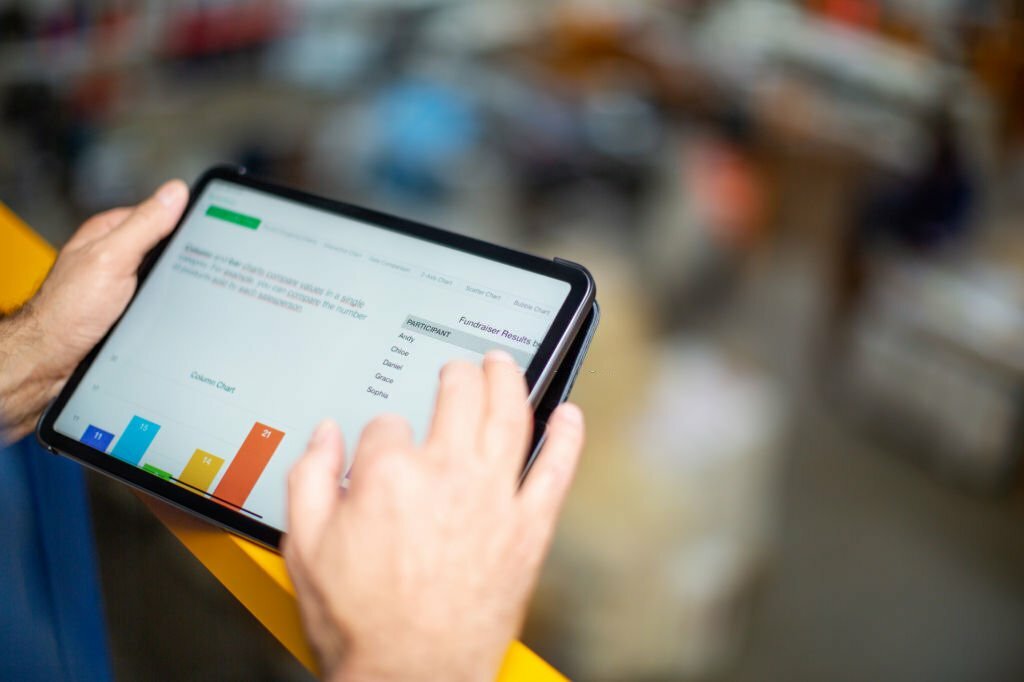Optimum, efficient, and sustainable distribution of consumer goods is a crucial aspect of our daily lives and has a profound impact on our planet’s well-being. It involves transporting the food we consume and the products we buy over vast distances. However, this widespread distribution often leads to adverse consequences for both the environment and society. Businesses must adopt sustainable practices when distributing consumer goods to reduce their carbon footprint and build a greener planet.
Surprisingly, waste in the consumer goods industry has not received much attention. Approximately one-third of the food produced worldwide never gets consumed, resulting in a significant contribution to greenhouse gas emissions. This level of waste is unnecessary and unsustainable when 828 million people across the globe go to bed hungry.
The current environmental and humanitarian challenges demand immediate attention, and CPG companies face substantial hurdles that hinder their ability to effect real change. These challenges encompass conflicting goals between manufacturers and retailers, the unpredictability of market conditions, and external pressure for growth.It is imperative that the CPG industry reexamines its conventional approaches and forges a cooperative alliance between manufacturers and retailers with a common goal of reducing waste. In this blog, we will delve into key strategies for promoting sustainable consumer goods distribution.

Best Practices For Sustainable Distribution of Consumer Goods
Comprehend Market Demand
Access to sales data can be a game-changer for companies of all sizes. The current pricing systems and tools are not well-equipped to grasp the demands of the present day. If the industry can make this data accessible to all, it will enable the development of more sustainable and cost-effective strategies to meet known demand. Such a change would lead to a significant reduction in waste across all consumer categories.
For greater speed and scalability, the consumer goods industry should abandon outdated systems, like Excel spreadsheets, for recording sales data. Instead, companies should adopt streamlined customer relationship management software that offers end-to-end insights throughout the sales journey. It will provide a real-time understanding of the market and customer needs.

Optimizing Inventory Management
An up-to-date knowledge of available stock on store shelves is crucial for manufacturers and retailers. It is essential for ensuring timely consumption, avoiding excessive stockpiling in storage, and maintaining the right inventory levels. With appropriate stock levels, both parties can reduce product wastage and address understocking problems. This initial stocking precision minimizes the need for frequent back-and-forth trips between manufacturers and retailers. Given the frequent fluctuations in supply and demand, having real-time information about store inventory levels is immensely valuable.
Tailoring Strategies for Local Market
The fast-moving consumer goods market is not universally uniform; it must account for the differences in various regions and geographical areas. It is essential to categorize accounts accordingly to adapt to local conditions. For instance, in locations where a product’s demand is lower, it’s necessary to reduce premium features and increase promotional efforts. By leveraging sales insights obtained from a diverse set of commercial data sources, consumer goods companies can establish pricing strategies tailored to specific local markets, thereby optimizing their sales in those regions.
Efficient Transportation For Supply Chain
Efficient transportation is a pivotal aspect of sustainable consumer goods distribution. It encompasses a range of strategies to reduce the environmental and economic costs associated with moving products from manufacturers to consumers. One core practice is optimizing delivery routes. By using advanced route planning software, businesses can minimize the distance traveled and ensure that delivery trucks are running at capacity. It not only reduces fuel consumption but also lowers greenhouse gas emissions, helping to combat climate change.
Adopting eco-friendly vehicles is another key component of efficient transportation. Electric and hybrid vehicles and those running on alternative fuels like compressed natural gas emit fewer pollutants and reduce the carbon footprint of the distribution process. Consolidating shipments is yet another practice that falls under efficient transportation.
Rethinking Packaging
Packaging innovation is a critical element in the sustainable distribution of consumer goods. It involves rethinking traditional packaging materials and designs to minimize environmental impact. Eco-friendly packaging materials, such as biodegradable plastics and recycled paper, have high utilization and can reduce waste to promote sustainability. These materials break down easily in landfills, reducing the environmental impact.
Companies are embracing minimalist and efficient packaging designs that reduce the need for excess materials and, consequently, decrease waste generation. Furthermore, reusable packaging solutions, like glass or metal containers, encourage consumers to reduce single-use plastic waste and contribute to a circular economy. Altogether, packaging innovation not only reduces the carbon footprint of the supply chain but also aligns businesses with environmentally conscious consumer preferences.
Optimizing Trade Promotions for Maximizing Relevance and ROI
Consumer Goods companies allocate more than 20% of their sales revenue toward trade promotions. However, 59% of these promotional campaigns ultimately result in financial losses. Given the prevailing industry norm of limited returns on investment, the companies that can precisely direct their promotions toward their most relevant markets will emerge as industry leaders. With a genuine grasp of market conditions obtained through real-time insights, companies can introduce trade promotions that positively impact the category and its bottom line.
Conclusion
Sustainably distributing consumer goods is a complex endeavor that requires a multifaceted approach. By incorporating efficient transportation, eco-friendly packaging, local sourcing, collaborative distribution, data-driven decision-making, renewable energy, and consumer education, businesses can make significant strides toward reducing their environmental impact. As consumers become more environmentally conscious, adopting these best practices not only benefits the planet but can also provide a competitive edge in the market.
In the face of global challenges such as climate change and resource depletion, sustainable distribution practices are not just a choice; they are necessary for a better and more sustainable future.
Our unified platform empowers consumer goods companies in their journey towards sustainability. By offering advanced supply chain optimization, inventory management, and route optimization solutions, our solution enables companies to minimize resource wastage, reduce carbon emissions, and make more informed decisions that align with their sustainability goals.
Incorporating Ivy Mobility into your distribution strategy is a step in the right direction for companies looking to secure a sustainable future in distribution. To explore how our platform can help your business achieve greater sustainability in its operations and distribution processes, Book a demo with us today.